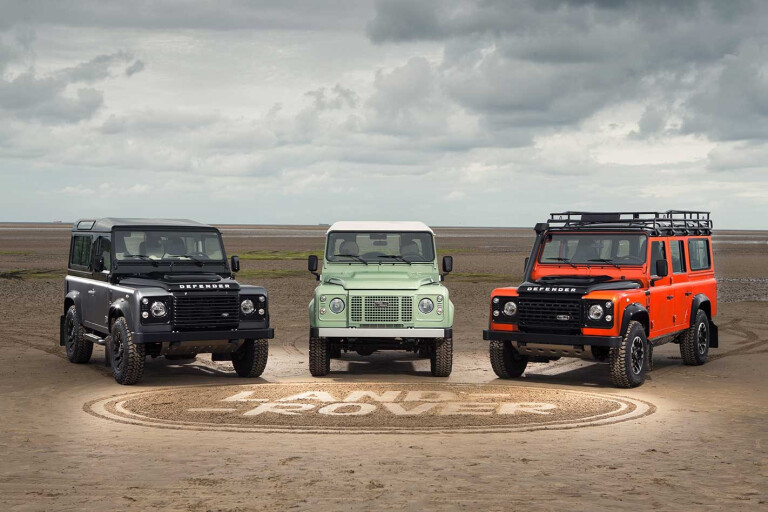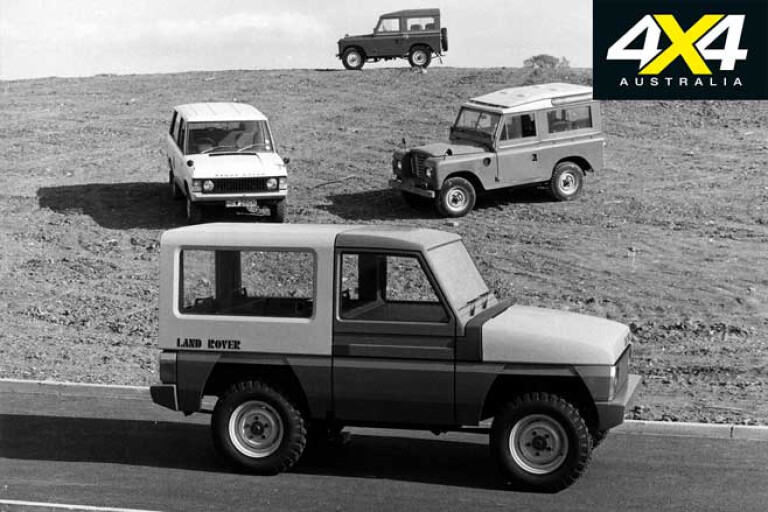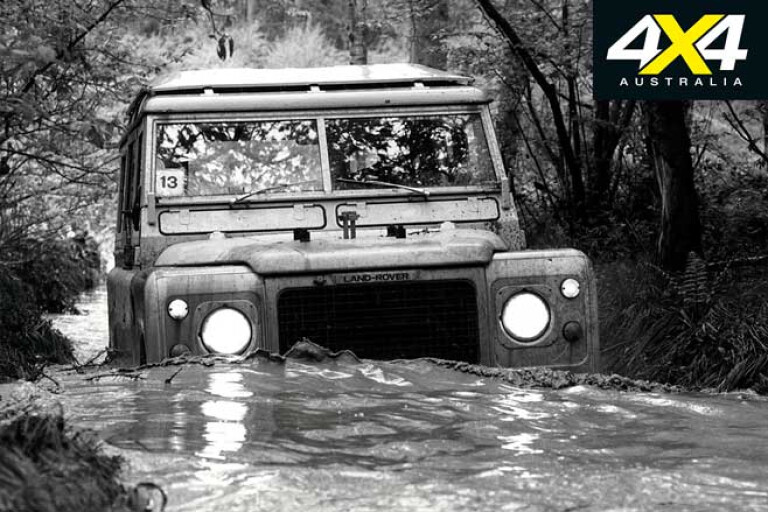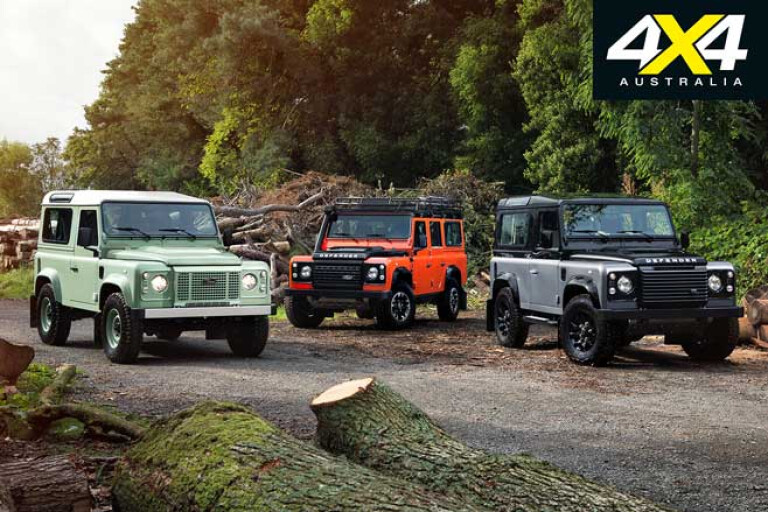
IT’S NO SECRET that the last of the old-school Land Rover Defenders to roll off the production line in 2016 was remarkably similar in design and concept to the original Land Rover launched in 1948.
Other than the obvious styling similarities, both had a basic separate chassis with a steel bulkhead, mostly aluminium body panels and live-axle suspension, albeit with leaf springs early on and coils in the later County and Defender years.

Later-model Defenders had advanced turbo-diesel engines, but, other than that, development over 68 years moved at a slow pace, until the recent launch of the all-new model at this year’s Frankfurt Motor Show.
The new Defender is undoubtedly a technological tour de force, but how did a company like Land Rover, with such a large range of modern 4x4s – Discovery, Range Rover, RR Velar and RR Evoque – manage to let the Defender simply plod along for so long? And then allow the nameplate to be absent from the market for nearly four years?
Here’s how the Defender story reached this point…
Building Blocks

WE ALL know the old Defender can trace its roots back to the original Land Rover that was unveiled at the Amsterdam Motor Show in 1948. This was developed into the Land Rover Series I, which immediately found immense sales success thanks to its unequalled versatility. In fact, the Land Rover went on to become a British manufacturing success story that far exceeded initial expectations. In the first year of production, a total of 3048 Land Rovers were made, then 8000 in 1949 and 16,000 in 1950.
To cut a long story short, the Series I was replaced by the Series II in 1958, followed by the Series IIA in 1961 and the Series III in 1971, and by 1976, one million Land Rovers had been produced; many of those in overseas plants including Australia, which was the first country outside of England to manufacture Land Rovers.
As early as 1975, Land Rover knew that a replacement for the Series III was needed, and it toyed with the idea of a new pick-up based on the Range Rover’s body-style, called the SD5 project, but limited budgets put the brakes on its development.

“In the post ’70s, there wasn’t terribly much money available for development of a new vehicle,” explains Mike Bishop, Land Rover Classic Product Specialist.
“They knew that they really had to make a new vehicle (the SD5 project) but they didn’t,” continues Mike. “If circumstances had been different, you know, if they had launched an all-new vehicle instead of the 110, that looked a little bit like a Range Rover, but a pick-up, what you’d probably have now is a vehicle [Defender] which is very, very similar to everybody else.”
Instead of the SD5, in 1980 Land Rover launched the Series III Stage 1 model with a 3.5-litre V8 engine, and this was essentially a practice run for what would come next. While the Stage 1 still ran leaf-spring suspension, Land Rover already had plenty of experience with coil springs thanks to the development and launch of the Range Rover a decade earlier, and this technology was applied to the Land Rover in March 1983 with the launch of the 110.
The following year the coil-spring 90 (actually a 93-inch wheelbase) variant was introduced, followed again by the long-wheelbase 127 model. All of these coil-spring models are now retrospectively referred to as Defenders.
The Defender

THE coil-spring Land Rover 110s finally arrived on the Australian market in 1985, and the wagon variants were labelled County. Both the wagon and cab-chassis were available with a 3.5-litre petrol V8 or a 3.9-litre Isuzu-sourced turbo-diesel four.
The Defender nameplate was (officially) introduced in the UK in 1990, at which time the vehicle was equipped with the same 2.5-litre turbo-diesel engine (200Tdi) introduced in the Discovery a year earlier. In Australia, we’d have to wait until 1992 for the Defender nameplate and 200Tdi engine.
“There was a chap in the product team for Defender, and he came up with the name,” explains Mike Bishop. “It was basically around the vehicle’s military history… and the Defender needed its own name because of the launch of the Discovery, so it could no longer just be 90 and 110… it couldn’t be just Land Rover anymore.”

At launch, the Defender was available here as a five-door wagon or two-door cab-chassis, both with the 200Tdi that had relatively modest outputs of 80kW at 3800rpm and 255Nm at 1800rpm; although, it proved very economical.
The only gearbox option was a five-speed manual, and the Defender ran a two-speed transfer case with a full-time 4x4 system. The centre diff could be unlocked and locked in high or low range, which many found to be a handy feature.
While Land Rover production had decreased significantly by the early 1990s due to the success of Japanese manufacturers, in July 1993 the Defender range celebrated another sales milestone: the 1.5 millionth vehicle since production began in 1948.

Over the next three decades, Defender production plodded along at the Solihull plant in much the same way as it always had. While other Land Rovers such as the Range Rover and Discovery would undergo revolutionary revamps, and all-new models including the Freelander and Range Rover Sport introduced, Land Rover evolved the Defender just enough over the years to keep it relevant … and compliant with much of the world’s emissions standards.
“Discovery 1 was developed around Range Rover on a very, very limited budget,” says Mike Bishop, “and Discovery 1 was very successful, so they were able to get the money to develop a new Range Rover, the P38, to move Range Rover into the future, because it was the king. But the Defender had to wait, which was, in hindsight, from an iconic point of view, the right decision.”
The 200Tdi was replaced by the 300Tdi in 1994, with various changes including the introduction of Bosch electronics. Power and torque were up slightly (to 83kW at 4000rpm and 265Nm at 1800rpm) and the Defender scored a new five-speed manual gearbox. The long-wheelbase Defender 130 was also introduced to Australia in 1994 in Single Cab and Crew Cab variants.

The 300Tdi was replaced by a new five-cylinder Td5 engine in 1998 featuring Electronic Unit Injection, with power and torque now up to 90kW at 4200rpm and 300Nm at 1950rpm respectively. The Defender Xtreme (as the wagon was marketed here) scored electronic traction control from 2000, and the model line-up was largely unchanged until the short-wheelbase Defender 90 arrived in 2003.
In 2007, a 2.4-litre Ford turbo-diesel replaced the Td5 and was mated to a six-speed manual. While max power output was still a modest 90kW at 3500rpm, peak torque was now up to 360Nm at 2000rpm. This greater torque output, along with the six-speed ’box, made the Defender a much better on-road touring vehicle, while retaining its legendary off-road capability.
Build quality was also significantly improved, with later-model Defenders less likely to have water leaking into the cabin when it rained.
The last Defender update included the adoption of a 2.2-litre four-cylinder turbo-diesel in 2012, with the same peak outputs as the previous 2.4-litre engine. This would see the Defender out until production wound up in 2016.

“No one envisaged it would go on for this long,” says Mike Bishop. “As numbers dwindled for use as a traditional pick-up, and people started buying them as a specialist vehicle… in the last year of Defender they were building roughly 100 vehicles a day, and about 90 of these would be station wagons, and just 10 would be standard pick-ups.
“You’d get the Welsh farmer saying ‘Oh, it’s going to be such a shame, I won’t be able to buy a Defender pick-up’, but imagine if you’re Mr Tata, and you’re making 10 cars a day… you’ve got to look at this pragmatically, and the world has changed. The vehicle has done an amazing job…
Even though the Defender got to the point of being one of the world’s ‘hero’ vehicles, it could never reach its full potential because it was held back by its production scale and its takt time. If you look at a Range Rover, takt time is about 86 seconds per stage to build the car, whereas the Defender was four-and-a-half minutes.”
The End Game

THE final Land Rover Defender Limited Edition models to roll off the Solihull production line in 2015/16 paid homage to the nameplate’s long and distinguished history. There were three models, available in 90 or 110 wheelbase options: the Heritage, Adventure and Autobiography (the latter not offered in Australia).
Designed to evoke memories of the 1948 Land Rover, the Heritage Limited Edition was painted in Grasmere Green, inspired by the original post-WWII RAF surplus paint applied to the first Land Rover. One of these collectible Defenders will now be worth a lot more than the original price.
The Adventure Limited Edition stood out in its bright orange paintwork and special graphics, as well as extra underbody protection plates and unique interior trim, while the Autobiography had boosted power and torque outputs plus a host of luxury appointments.
The Long Leak

SINCE the demise of the ‘original’ Defender, there have been countless rumours regarding a replacement. For the first couple of years Land Rover remained tight-lipped on the subject, but in the last 12 months or so there have been an ever-increasing number of ‘spy shots’ – most likely intentionally leaked by Land Rover’s marketing department.
When the all-new Defender descended a ramp onto the stage at the 2019 Frankfurt Motor Show in September, it confirmed what many fans had feared: the Defender was no longer the simple, tough and capable utilitarian it had been for nigh-on 70 years. And while this new model will write its own chapter in the history of Land Rover, there’s not much chance it will be as long as the last Defender’s … and that’s probably a good thing.
Key Land Rover Defender milestones

1983 - Long-travel coil-spring suspension introduced on 110
1984 - Short wheelbase 90 introduced
1988 - Rover Group sold to British Aerospace
1990 - Defender nameplate introduced
1993 - 1,500,000th Land Rover (Defender range) produced
1994 - BMW buys Rover Group
1998 - Td5 engine introduced
2000 - Xtreme model scores electronic traction control and Ford buys Land Rover
2007 - Interior redesigned and 2.4-litre turbo-diesel engine introduced
2008 - Tata Motors buys Land Rover and forms JLR

COMMENTS